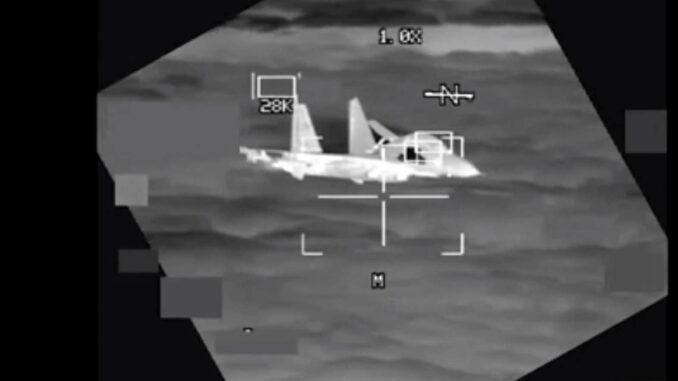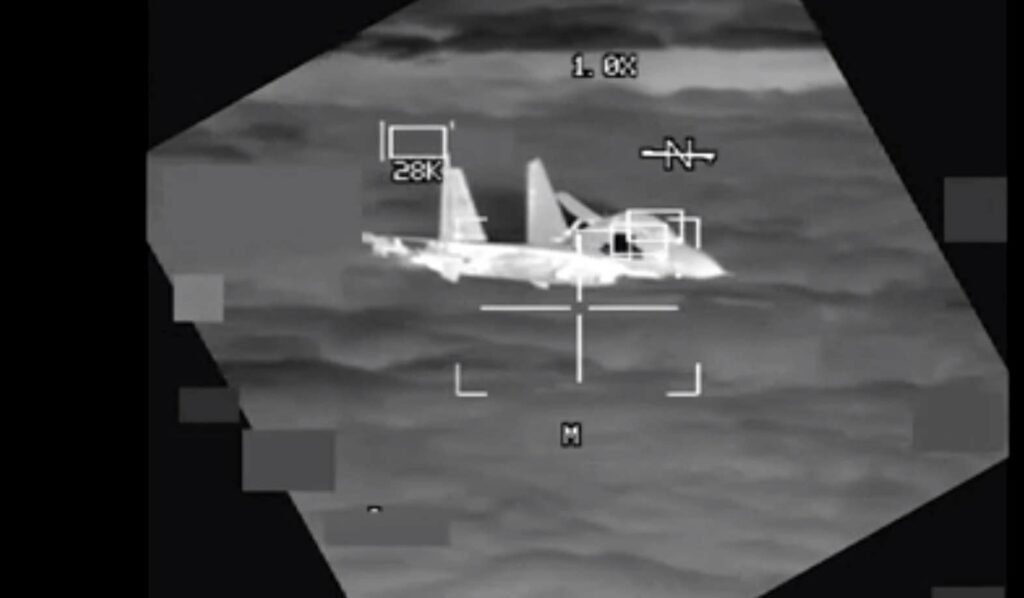
A Chinese fighter jet has come within 3 meters of a US Air Force B-52 bomber over the South China Sea, raising serious concerns about the risk of collision and escalating tensions between the USA and China. The encounter comes against a backdrop of growing military confrontation and diplomatic uncertainty between the two superpowers.
Background to the Incident
Dangerous approach: On August 19, a Chinese fighter jet came alarmingly close to an American B-52 bomber, at a distance of around 3 meters, during an overflight of the South China Sea. This maneuver was described as “inappropriate and unprofessional” by the U.S. Indo-Pacific Command.
Risk of collision: The Chinese pilot’s actions created an imminent danger of collision, raising questions about Chinese airmanship and military intentions.
Geopolitical context
Summit meetings: The incident took place shortly before key diplomatic meetings, notably between US President Joe Biden and Chinese Foreign Minister Wang Yi, as well as other senior US and Chinese officials.
Tensions in the South China Sea: This event comes against a backdrop of rising tensions in the region, with mutual accusations of provocative actions and military incursions.
Military and security implications
Increase in Incidents: Ely Ratner, a senior Pentagon official, has reported a significant increase in coercive and risky behavior by Chinese pilots towards US aircraft since 2021.
Military Dialogue Suspended: Following Nancy Pelosi’s visit to Taiwan, China interrupted military communications with the US, heightening concerns about the lack of military dialogue to defuse tensions.

Strategic implications
China, a Major Challenge: The United States has designated China as its major strategic challenge, recognizing its ability to compete in terms of military power, economic strength and international influence.
Territorial claims: China claims almost all of the South China Sea and has stepped up its military actions, notably near Taiwan, underlining its determination to defend what it considers its sovereignty.
Potential consequences
Risk of escalation: These air confrontations could lead to unintended escalation, increasing the risk of open conflict in a strategically crucial region.
Diplomatic uncertainty: While diplomatic meetings could offer a platform for easing tensions, the outcome remains uncertain, especially in light of these recent incidents.
Regional and global influence: These tensions could affect international and regional relations, influencing alliances and balances of power in the Indo-Pacific.
The dangerous approach of a Chinese jet to an American bomber has heightened already high tensions in the South China Sea. The incident raises crucial questions about air safety, the risk of military escalation and the prospects for dialogue between the USA and China. In a context of growing strategic rivalries, the management of these incidents and the associated diplomacy will be decisive in avoiding uncontrolled escalation in one of the world’s most tense regions.